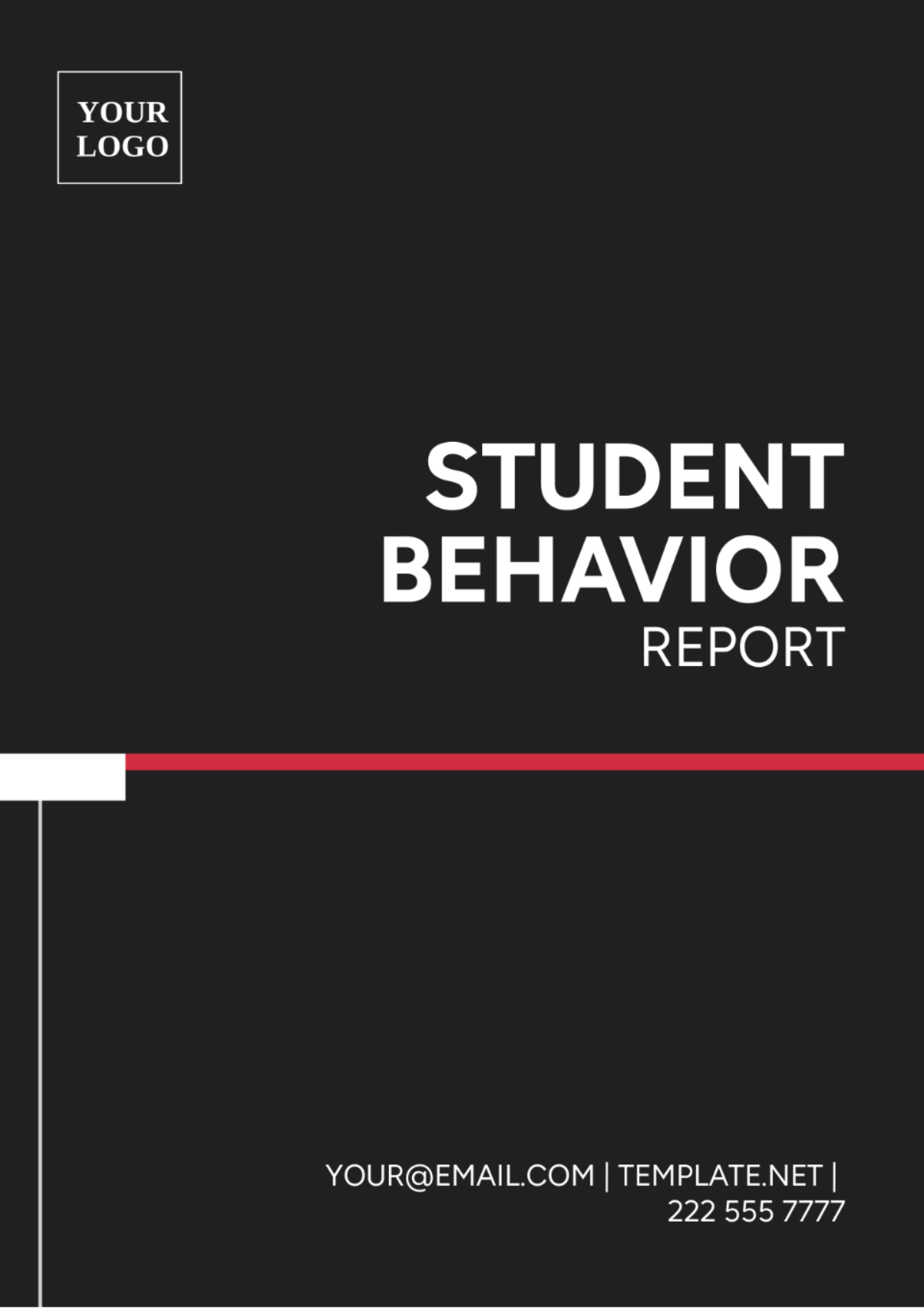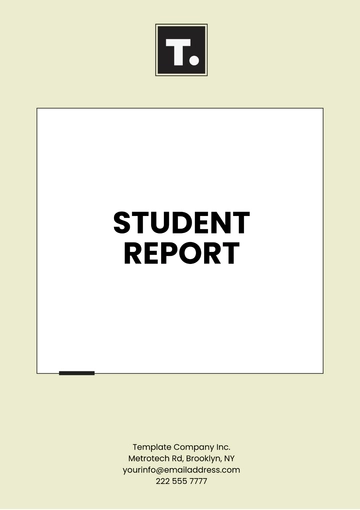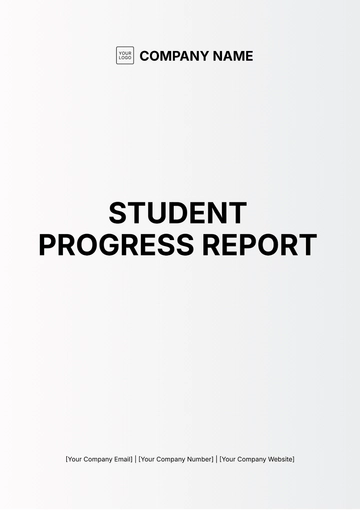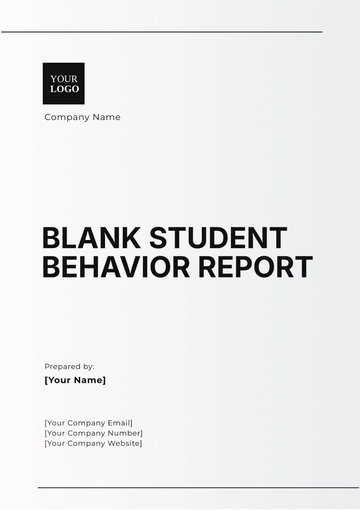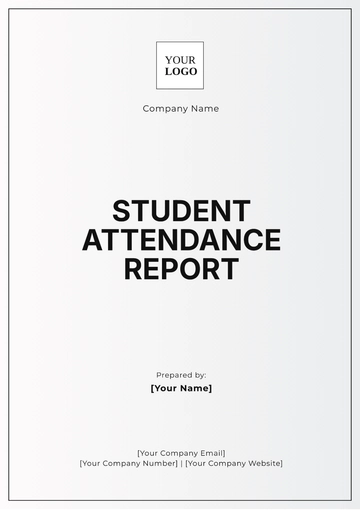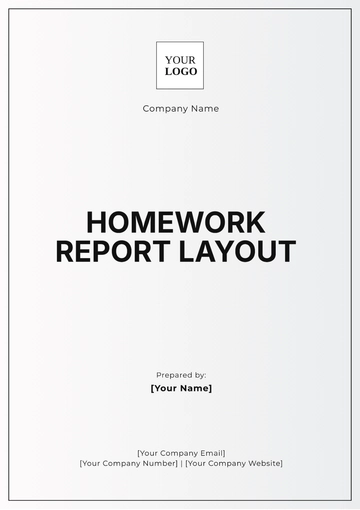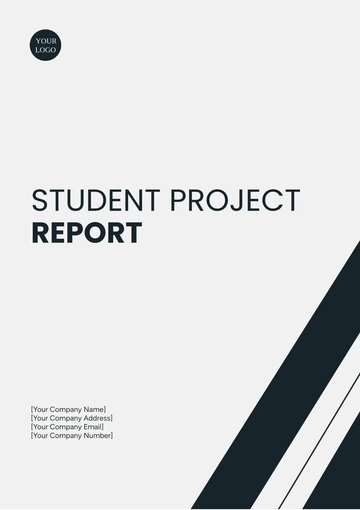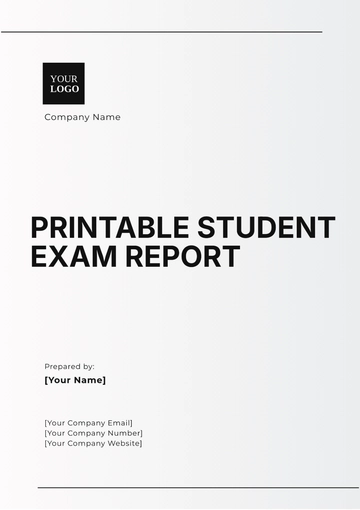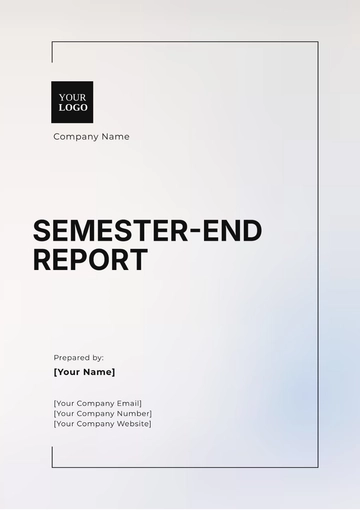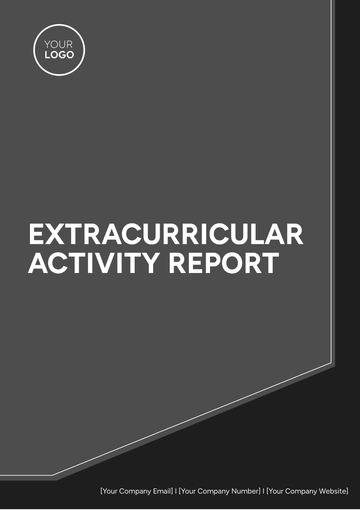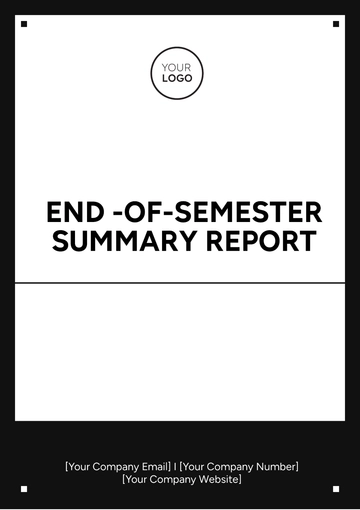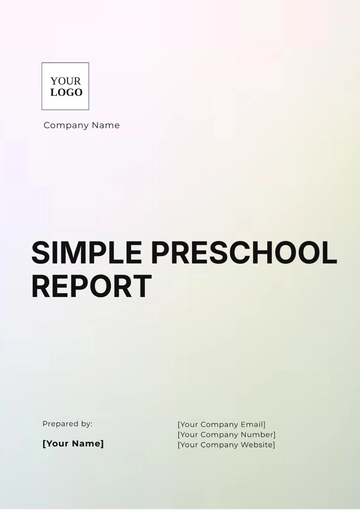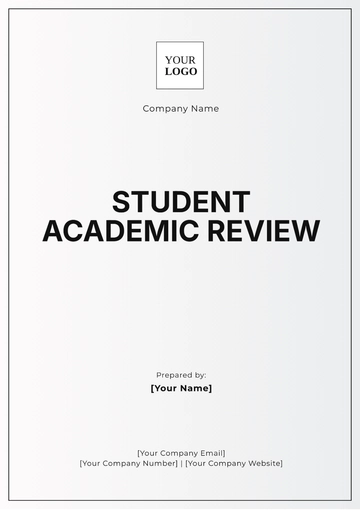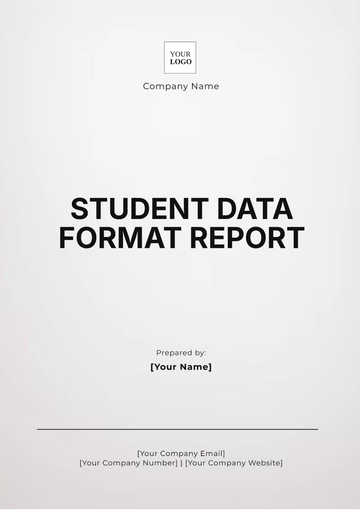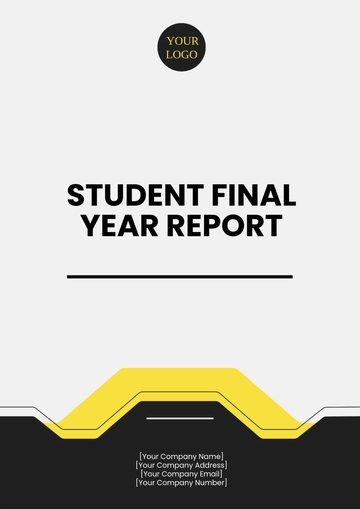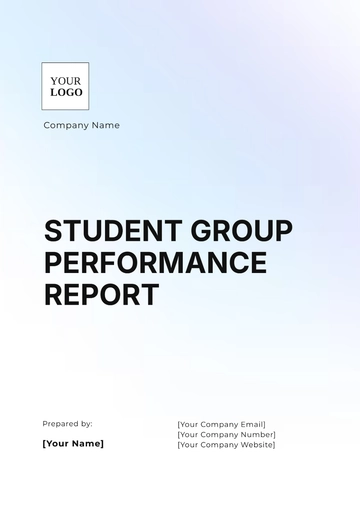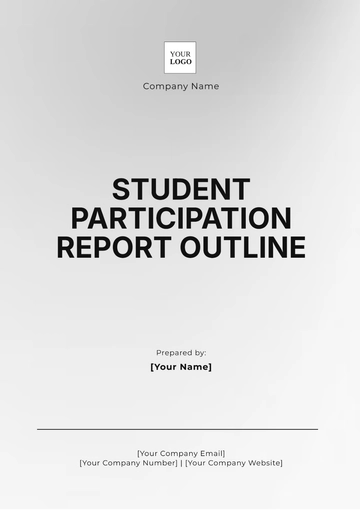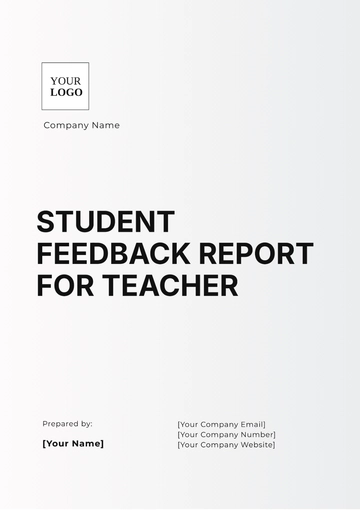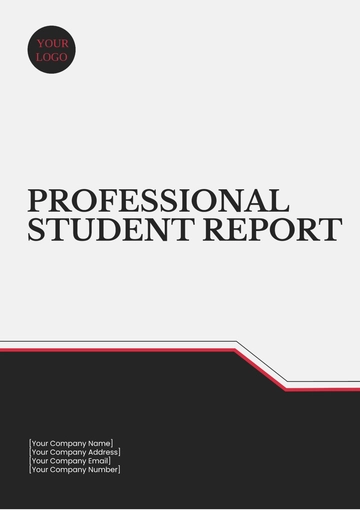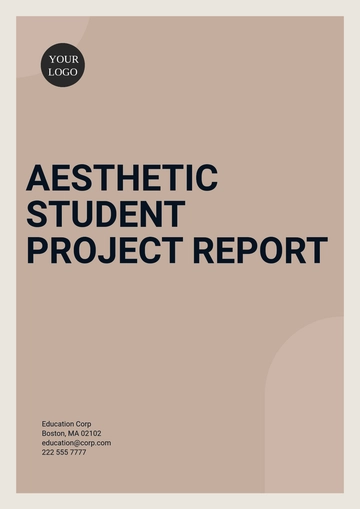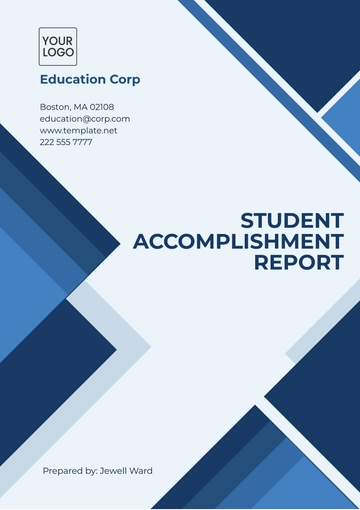Student Behavior Report
I. Introduction
The Student Behavior Report provides a comprehensive overview of student behaviors, disciplinary actions, interventions, and support services within [SCHOOL/INSTITUTION NAME]. This report aims to monitor, evaluate, and improve student behavior management and support systems. By documenting data and trends related to student behavior, stakeholders can make informed decisions, identify areas for improvement, and enhance the learning environment for all students.
Purpose
Monitor and report on student behavior incidents, disciplinary actions, and interventions.
Track trends and patterns in student behavior over time.
Identify challenges, opportunities, and areas for improvement in behavior management.
Provide insights into the effectiveness of behavior support programs and interventions.
Scope
This report will focus on analyzing student behavior data for various grade levels, classes, and incidents within [SCHOOL/INSTITUTION NAME]. It will cover key indicators such as behavior incidents, types of disciplinary actions, student interventions, and outcomes.
II. Methodology
To gather relevant data and insights for this report, a combination of quantitative analysis and qualitative assessment methods were employed. This included:
Data Collection
Behavior Incident Reports: Gathering data from behavior incident reports to capture details of student behaviors, incidents, and disciplinary actions.
Student Intervention Records: Analyzing records of student interventions and support services provided by the school.
Teacher and Staff Feedback: Collecting feedback from teachers and staff regarding student behavior, challenges, and support needs.
Data Analysis
Quantitative data collected from behavior incident reports, student intervention records, and feedback forms were analyzed using statistical methods to identify trends, patterns, and areas for improvement. Qualitative data from teacher and staff feedback were analyzed to extract key insights and identify common themes.
III. Overview of Behavioral Findings
The behavior of students at [YOUR INSTITUTION] generally aligns with the expected standards. However, several instances require intervention. The table below summarizes the behavioral incidents categorized by their nature and frequency of occurrence:
Behavior Type | Number of Incidents | Impact Level |
|---|
Positive | 150 | High |
Neutral | 75 | Medium |
Negative | 30 | Low |
Details and specific cases of note are further elaborated in the following sections of this report. It is imperative to address negative behaviors promptly to mitigate any adverse effects on the school environment.
IV. Weekly Highlights
Behavior Incidents
Disciplinary Actions
Student Interventions
V. Analysis
Behavior Trends
Increase in Bullying Incidents: There has been a noticeable increase in bullying incidents compared to previous weeks, indicating a need for targeted interventions and awareness programs.
Decrease in Disrespectful Behavior: There has been a decrease in disrespectful behavior incidents, which may be attributed to recent behavior management initiatives implemented in classrooms.
Challenges
Several challenges were identified during the assessment, including:
Lack of Awareness: Some students may not fully understand the consequences of their behavior, highlighting the need for improved communication and education on behavioral expectations.
Inconsistent Discipline: Inconsistent application of disciplinary actions across classrooms may lead to confusion and inconsistency in managing student behavior.
VI. Recommendations
Based on the findings, the following recommendations are proposed to address challenges and optimize student behavior management:
Recommendation | Description |
|---|
Recommendation 1 | Implement Anti-Bullying Campaign: Launch an anti-bullying campaign to raise awareness and promote positive behavior among students. |
Recommendation 2 | Enhance Behavior Management Training: Provide additional training for teachers on effective behavior management strategies and consistent disciplinary practices. |
Recommendation 3 | Strengthen Peer Mediation Programs: Strengthen peer mediation programs to empower students to resolve conflicts in a positive and constructive manner. |
VII. Conclusion
In conclusion, the Student Behavior Report provides valuable insights into student behaviors, disciplinary actions, interventions, and support services at [SCHOOL/INSTITUTION NAME]. By addressing the identified challenges and leveraging the opportunities, the school can improve behavior management practices, enhance the learning environment, and support the overall well-being of its students.
VIII. Overview of Behavioral Findings
The behavior of students at [SCHOOL/INSTITUTION NAME] generally aligns with the expected standards. However, several instances require intervention. The table below summarizes the behavioral incidents categorized by their nature and frequency of occurrence:
Behavior Type | Number of Incidents | Impact Level |
|---|
Positive | 150 | High |
Neutral | 75 | Medium |
Negative | 30 | Low |
Details and specific cases of note are further elaborated in the following sections of this report. It is imperative to address negative behaviors promptly to mitigate any adverse effects on the school environment.
VI. Conclusion
The behavior of students at [YOUR INSTITUTION] plays a pivotal role in shaping the educational experience and environment. While most students meet the expected behavioral standards, vigilance and proactive interventions are essential to maintain and enhance these standards. By implementing the recommended strategies, the institution can foster a more positive and productive academic environment.
